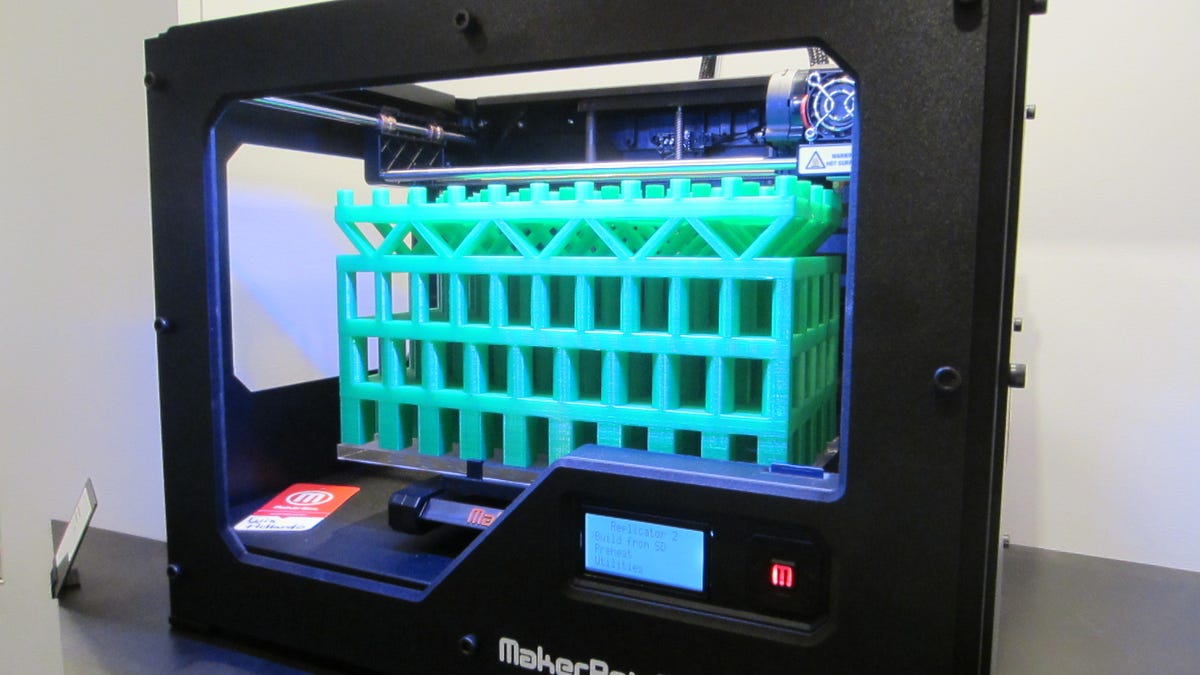MakerBot revamps Replicator 3D printer, adds retail store
With new printers, new user-friendly software, and a new retail store, MakerBot shows that it's serious about attracting the average consumer to 3D printing.
Brooklyn, N.Y.-based 3D printer manufacturer MakerBot hosted a press conference today, where it unveiled new products, as well as its first retail storefront. In addition to the store, the company announced a new Replicator 2 3D printer for immediate availability, a higher-end Replicator 2X due out in Q1 2013, and new 3D printing software, dubbed MakerWare.
The Replicator 2 comes on the heels of
Interestingly, the Replicator 2 is the low-end model of the new line, and it only prints in one color. It also lacks a heated build surface, which in part helps explain a new focus from MakerBot on PLA plastic for printing. PLA can be generally easier to use than ABS, the other common 3D printing plastic, since it sticks to both to itself and to the build surface more readily, preventing cracks in the end product and slippage during printing. MakerBot will debut a two-color-capable Replicator 2X, that also has a heated build plate, in January 2013 for $2,799.
MakerBot CEO Bre Pettis emphasized that these new printers are aimed at architects, product designers, and engineers who need polished, professional-quality models for demonstration, prototyping, and other serious-minded purposes. That's a different message than the company's "3D printing for all" mantra in the first half of the year.
I asked a MakerBot representative about the apparent shift, and was told that it's really about polishing the product at the higher-end in order to trickle those features down to a more-consumer-friendly product. Citing the original Replicator's wooden frame and its heated build plate, the representative explained that it would be difficult for consumers to purchase an expensive, potentially hard-to-use product into their homes, particularly if it looks amateurish and has dangerous parts. MakerBot hopes that it can bring some of the polish and capabilities of the newer models into a more-consumer-oriented product in the near future.
That goal for more consumer appeal is also apparent in MakerBot's new MakerWare 3D printing software. MakerBot says it has improved the speed at which the software readies object designs for 3D printing, and in general made the software simpler and easier-to-use than the old ReplicatorG application.
MakerWare is still in beta, but it's available for download here. I hope to get a chance to use it soon, but the hope is that MakerBot has improved usability without sacrificing functionality. At least based on the beta screenshots, MakerWare looks to at least have the usability part figured out.
Last, the company also announced the opening of the MakerBot Store at 298 Mulberry St. in Manhattan. The retail presence will give the company a place to interact with the public and to show off its products and the things they can make. The store will sell MakerBot printers, plastic feedstock, and also an assortment of 3D-printed objects.


